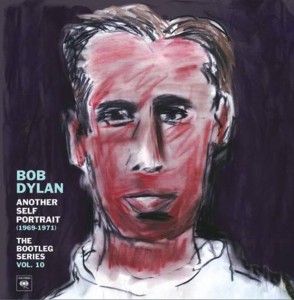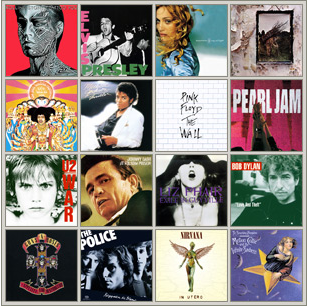



I remember reading the review of Sticky Fingers in Rolling Stone, when the record was new, and thinking how sad the reviewer’s job must be to be disappointed in this fantastic record. Today Slate’s Jack Hamilton reviews the original album (not the new double and triple disk versions meant to cash in on enthusiasm for the anniversary) and it’s a much happier and appropriate piece, and he mentions those less than enthusiastic reviews.
Because we’ve posted most of the songs from the album here over the years, especially the terrific Sway and the majestic Moonlight Mile, here is a version of Wild Horses from the Flying Burrito Brothers, which came out a year earlier than the Stones’ version.
I first learned/heard about the MC5 in Rolling Stone magazine, which as I recall ran a long story about John Sinclair, the martyred leader of the White Panthers who was imprisoned for possession of two sticks of Motor City tea and having grand ideas about freedom and equality that apparently scared the crap out of the cops and their bosses.
I just went looking for that story, to see how much my memory was playing tricks, and found instead this review by Lester Bangs of the first MC5 album for Rolling Stone, which captures his sense of the hype and situation. His lede:
Whoever thought when that dirty little quickie Wild in the Streets came out that it would leave such an imprint on the culture? First the Doors (who were always headed in that direction anyway) grinding out that famous “They-got-the-guns-but-we-got-the-numbers” march for the troops out there in Teenland, and now this sweaty aggregation. Clearly this notion of violent, total youth revolution and takeover is an idea whose time has come — which speaks not well for the idea but ill for the time.
Later in the review Bangs says that the song Kick Out The Jams is like Barrett Strong’s Money as if recorded by the Kingsman, as if that was a bad thing.
 Columbia Records announced today that on August 27th (my birthday, so you know what to get me), they’re releasing Bob Dylan’s Bootleg Series No. 10: Another Self Portrait.
Columbia Records announced today that on August 27th (my birthday, so you know what to get me), they’re releasing Bob Dylan’s Bootleg Series No. 10: Another Self Portrait.
When Dylan released the original Self Portrait, in 1970, Greil Marcus’ review in Rolling Stone started, “What is this shit?” And pretty much everyone wondered the same thing.
I was 14 years old at the time, and I’d listened to Dylan, but I didn’t grow up with him. I remember as a 12 year old being at my young aunt’s house in Brooklyn for a weekend, playing Freewheelin’ and Bringing It All Back Home for the first time, many times, enough times to have them ask me to stop. When Self Portrait came out some forgotten relative bought me the songbook for my birthday, and I “learned” the album by playing the songs on my guitar, figuring out the melodies on the piano. I was well aware that Dylan didn’t write most of them, and I was aware the world thought the album was crap, but what I found in that songbook was a collection of great singable songs I was able to play despite my rudimentary six-string skills.
So, what happened when I finally heard Self Portrait, the album, performed by Bob Dylan and his associates? I loved it. It really is a collection of great dynamic musicians sitting around playing some very famous and some less famous songs, with Bob crooning in front of some excellent chick singers, and everyone is seeming to have real fun time (but not making any kind of big deal about it). It’s loose, but the arrangements are bold and artful. It sounds great and the songs really are great. Not folk, not pop, but simply enduring classic songs written for a clear voice and a bunch of friends backing you up.
Not many saw it that way. Some jokers in the 90s created a list of the 100 Worst Albums, and Self Portrait landed third, behind only Lou Reed’s Metal Machine Music and that album of Elvis talking to the audience. This is funny and just plain stupid.
Self Portrait comprises songs that were recorded in the studio while the band was warming up for the Nashville Skyline sessions. Dylan has had a few explanations for why he released them, as a double album(!), next. The one that seems truest is that he was sick of being the voice of a generation and wanted to do something that was the opposite of supercharged. Nashville Skyline got him part of the way there, but they were still Dylan compositions, still ripe for superheated analysis. (This was the period when AJ Weberman was stealing Dylan’s garbage and publishing about what he found.) An album of casual covers was Dylan’s way of taking the air out of the ball.
But my life was outside that history. For me, Self Portrait was a collection of very agreeable songs presented in a very pleasing way. Casual, appealing, easy to sing. Not the greatest Dylan album, not even close, but one I have listened to often. A great pleasure.
 About a year ago Rolling Stone updated their 500 greatest albums of all time list. You can read it here.
About a year ago Rolling Stone updated their 500 greatest albums of all time list. You can read it here.
As the Essential Remnants Top 50 countdown reaches the midway point, I thought it would be interesting to list the albums that Rolling Stone honored that the Remnants have ignored (with a comment):
Little Richard, Here’s Little Richard: Not a single mention of Little Richard on any of our lists, which is surely an oversight.
Public Enemy, It Takes a Nation of Millions: Didn’t make the Top 50, but certainly qualifies.
John Coltrane, A Love Supreme: Everyone named one, different jazz album.
Bob Marley, Legend: Too big, too mainstream for the Remnants list.
The Band, The Band: We went with Big Pink. RS listed both.
Pink Floyd, Dark Side of the Moon: Too monstrously popular to listen to anymore. Obviously of historical significance.
Love, Forever Changes: Not mentioned by us, but one of my favorite albums. This is Rolling Stone’s most idiosyncratic choice, since it isn’t historically significant or a big seller or representative of some genre. Nice!
The Beatles, Please Please Me: We have plenty of other Beatles. It’s all great.
Muddy Waters, Anthology: As a group we went for Howlin’ Wolf.
The Eagles, Hotel California: We went for Supershit 666 instead.
Carole King, Tapestry: Another hugely popular record it’s hard to hear fresh anymore.
Bob Dylan, Bringing It All Back Home: Another obvious choice. We went with another obvious choice.
Joni Mitchell, Blue: We split the Joni vote between Court and Spark and Hejira, so she didn’t rank in the top 50.
Michael Jackson, Thriller: Yet another monster classic that didn’t need a mention.
Van Morrison, Astral Weeks: The obvious artsy choice from a giant. We had the more rocking Moondance in the running, but it didn’t quite make the cut.
Bruce Springsteen, Born to Run: Once again, RS goes with the obvious classic. We do have a Bruce on our list.
Nirvana, Nevermind: And yet again, the classic that’s been played a few million too many times.
Bob Dylan, Blood on the Tracks: Similarly classic, but though obvious still sounding fresh as the day it was released.
Miles Davis, Kind of Blue: More jazz. Not as great or as influential as A Love Supreme, but masterful and beloved.
Marvin Gaye, What’s Going On: Seems like there must have been a tabulation error. This was on our lists. The best album of a great singer and songwriter.
Bob Dylan, Highway 61 Revisited: The Remnants didn’t go crazy over Dylan in their lists, but agreed on just one disk (not this one).
The Beatles, Sgt. Pepper’s Lonely Hearts Club Band: The most artsy elpee they made doesn’t need more recognition, though it certainly isn’t undeserved.